Written by: DeSpread

Disclaimer: The contents of this report reflect the opinions of the respective authors and are for informational purposes only and do not constitute a recommendation to buy or sell tokens or use the protocol. Nothing in this report constitutes investment advice and should not be construed as such.
Introduction
Berachain is a Layer 1 network that features a PoL (Proof of Liquidity) consensus mechanism that aligns the interests of validators, liquidity providers, and protocols. Currently, Berachain is running its second testnet, the bArtio Testnet, to address issues found in the first testnet.
Many ecological protocols have already been deployed on the bArtio Testnet version. As of January 2, according to the Berachain official website, a total of 234 protocols participated in the bArtio Testnet, and the cumulative number of wallets participating in the testing of Berachain's PoL mechanism has exceeded 2.38 million. Although it is only in the test network stage, these data show that the market's attention to Berachain and its ecology is quite high.
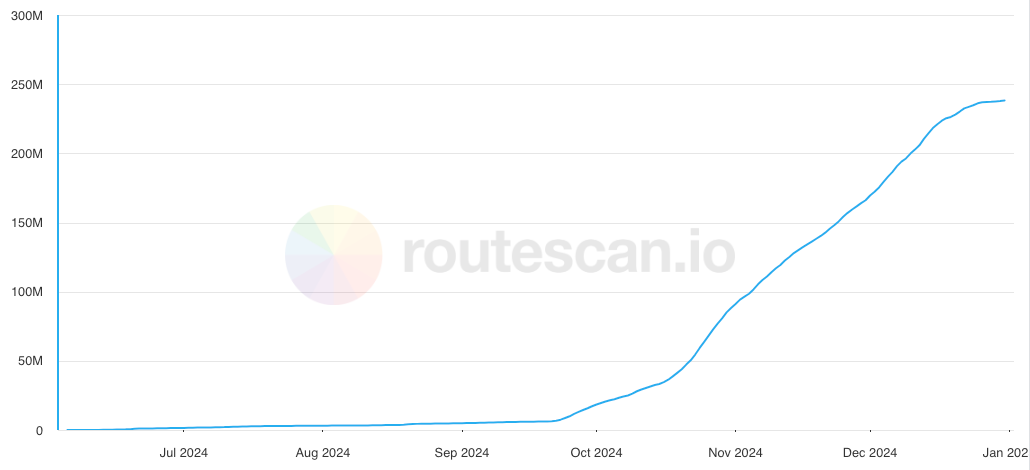
Smokey The Bera, the founder of Berachain, who has been pushing the "Q5 mainnet launch" since the end of 2024, recently introduced Boyco through an X tweet, suggesting that "Q5 will happen before April", indicating that the mainnet launch is imminent. This has also attracted new and old users of Berachain to join the ecosystem.
However, to participate in Berachain's ecosystem, one must understand their PoL mechanism. Before the mainnet was launched, various complex financial products launched by protocols in order to gain an advantage in the PoL mechanism instead created a large entry barrier for new users.
This article aims to explore various areas of the Berachain ecosystem to effectively lower the threshold for user participation. We will discuss projects that have outstanding performance in each field and detail how each protocol utilizes the PoL mechanism.
DEX
Berachain has a native DEX called BEX, which will be launched as BeraSwap when the mainnet is launched. BeraSwap will support smooth liquidity transactions within the ecosystem and ensure the effective operation of the PoL mechanism. In view of the existence of BEX, other DEXs that are preparing to be launched on Berachain are also preparing various more convenient and efficient services and strategies to attract users and liquidity in order to effectively compete with BEX.
2.1. Kodiak
Kodiak is a DEX that emerged from Berachain’s incubation project “Build a Bera”. In addition to supporting BEX’s Uniswap v2-style functionality (distributing liquidity evenly across the price range), Kodiak also provides Uniswap v3-like CLAMM (Concentrated Liquidity Automated Market Maker) functionality, allowing liquidity providers to set and concentrate liquidity within a specific range.
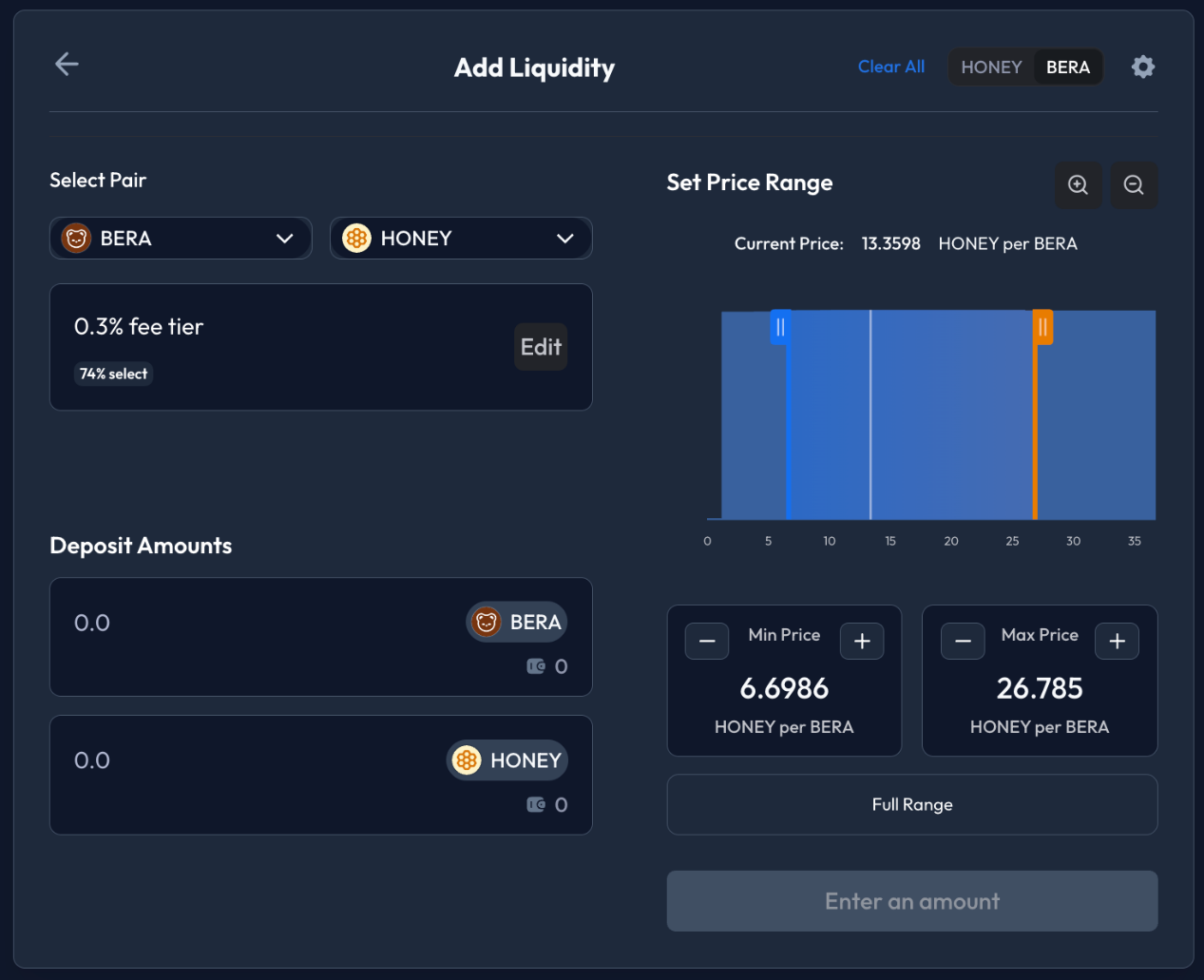
Users can provide liquidity in a narrow range through the CLAMM pool to more efficiently farm $BGT. In addition, Kodiak also provides an Island function to help users automatically reset and balance the CLAMM range, reducing the trouble of managing liquidity supply positions. This function uses BEX to rebalance liquidity, thus establishing a complementary rather than competitive relationship.
Not only that, due to the customizability of the liquidity range, the tokens of CLAMM liquidity positions are usually difficult to be used by other protocols, but Kodiak standardizes users' CLAMM liquidity positions through the Island function, so that the LP token can also be used in other protocols, promoting a more flexible and diverse ecological gameplay.
Prior to the mainnet launch, Kodiak has already worked with many projects in the Berachain ecosystem to establish itself as a core infrastructure. They also operate their own Berachain node as a validator and, as of January 3, have received the second highest BGT authorization in the bArtio Testnet.
2.2. Honeypot Finance
Honeypot Finance is a protocol that supports all aspects of the token life cycle, from issuance to providing liquidity and efficient transactions. It consists of several sub-protocols:
Henlo DEX: A DEX that specializes in protecting users from MEV attacks, providing limit orders and Batch-A2MM functions that collect user orders within a specific period and execute them at the same price.
Dreampad: A Launchpad protocol that provides incubation and funding opportunities for projects preparing to launch on Berachain while ensuring fair token launch and distribution.
Pot2Pump: A memecoin issuance platform that provides a safer memecoin issuance and trading environment, with features such as preventing robot sniping and refunding participating users if the 24-hour fundraising target is not achieved.
Like Kodiak, Honeypot Finance also plans to operate as a validator after the mainnet launch, offering its governance token $HPOT as a delegation reward to users who delegate $BGT.
In addition, Honeypot Finance uses the accumulated $BGT to release it to the $HPOT liquidity pool, thereby enhancing the liquidity of $HPOT. The protocol also plans to increase the value of the token by using node operating income to purchase and burn $HPOT, retaining the value of rewards paid to $BGT delegators, and further consolidating the liquidity of $HPOT.
In addition to the aforementioned Kodiak and Honeypot Finance, there are other protocols that promote efficient and convenient trading functions in preparation for the Berachain mainnet, including BurrBear, which supports capital-efficient trading by aggregating more than three similarly priced underlying assets (similar to Curve Finance), liquidity aggregator OogaBooga, and cross-chain abstract trading protocol Shogun.
Liquidity Staking
In a typical PoS network, network rewards are distributed to validators who hold a certain number of tokens and operate nodes. Therefore, if the network itself does not have a native token authorization structure, general users who do not operate nodes will not be able to obtain network rewards.
To solve this problem, liquidity staking protocols distribute rewards by accepting the staking of native tokens and delegating node operations, allowing ordinary users to participate in network staking. These protocols also issue LP tokens to stakers as proof of how many native tokens they hold, thereby increasing the liquidity of the ecosystem. Through these functions, liquidity staking protocols have also become the core infrastructure of the PoS network.
In contrast, although Berachain requires 69,420 $BERA to operate its nodes, its structure is that when liquidity providers deposit liquidity tokens obtained from the ecosystem protocol into Berachain, they will receive network rewards calculated in $BGT as well as interest on liquidity provision. Therefore, Berachain has basically built liquidity staking into the network protocol, except for the different methods and sequences.
While Berachain requires 250,000 $BERA to operate a node on the mainnet, Berachain is structured to distribute $BGT rewards and interest to liquidity providers, so aside from the method and sequence, Berachain essentially has liquidity staking built into the network protocol.
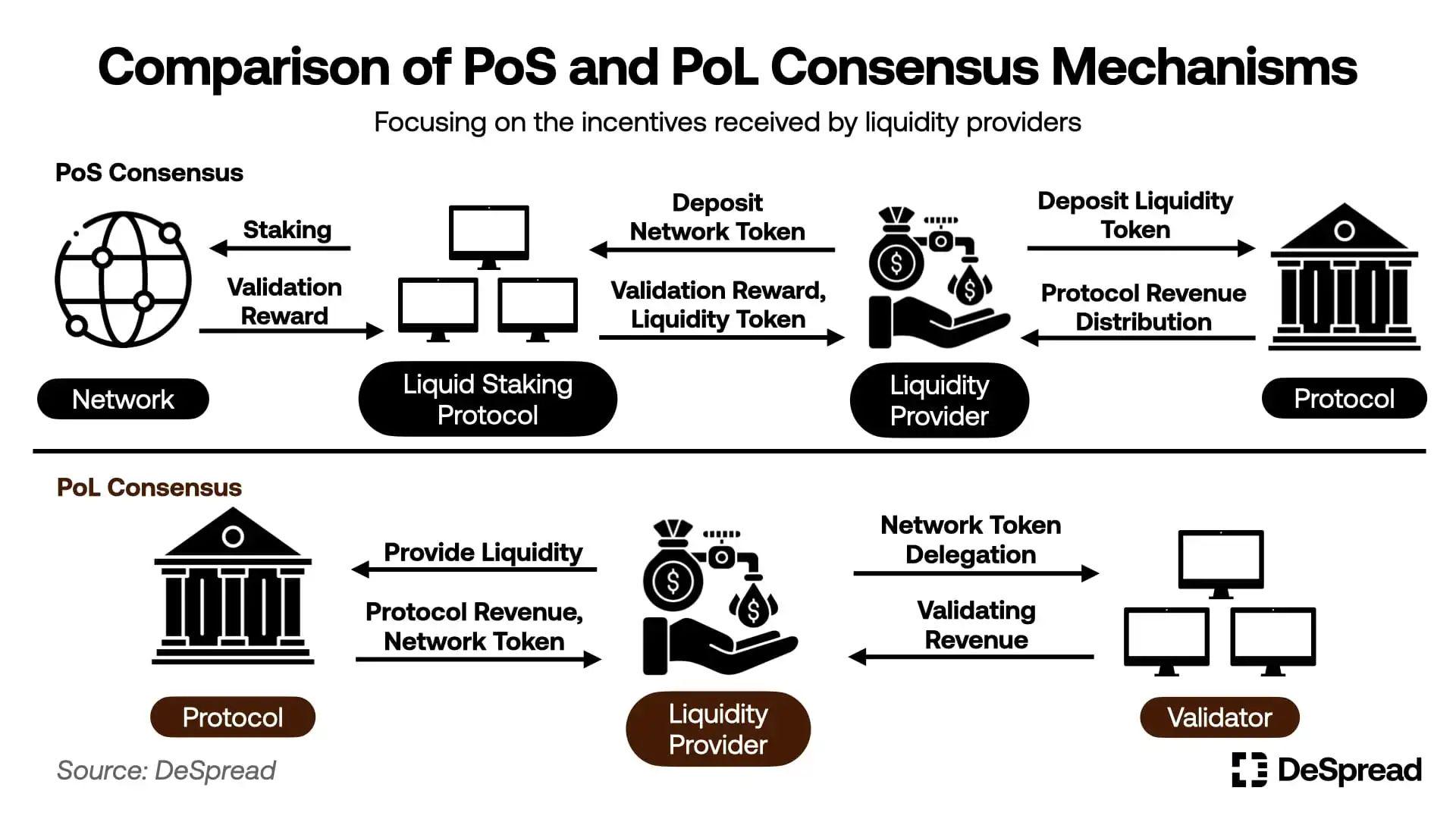
However, in Berachain, existing protocols can only start their liquidity pools by working with validators to provide rewards and gain voting rights, or by operating their own nodes to establish a self-sufficient flywheel model as demonstrated by Kodiak and Honeypot Finance.
In this context, Berachain's liquidity pledge protocol will provide a redemption function for $BGT (the voting power that determines Emission). This allows Berachain ecosystem projects to incorporate liquidated $BGT into their protocol mechanisms without the need to negotiate with validators or nodes. In other words, this makes it easier for ecosystem protocols to adopt a structure that tightly integrates the PoL mechanism.
3.1. Infrared
Infrared is a liquidity staking protocol incubated jointly with Kodiak through Berachain’s “Build a Bera” program.
Infrared operates repositories that accept LP tokens from liquidity pools, generate $BGT interest rates, and run network nodes. When users deposit LP tokens into these repositories, Infrared uses these tokens to generate $BGT, and users can claim $iBGT (liquidated $BGT) proportional to the LP tokens they deposited.
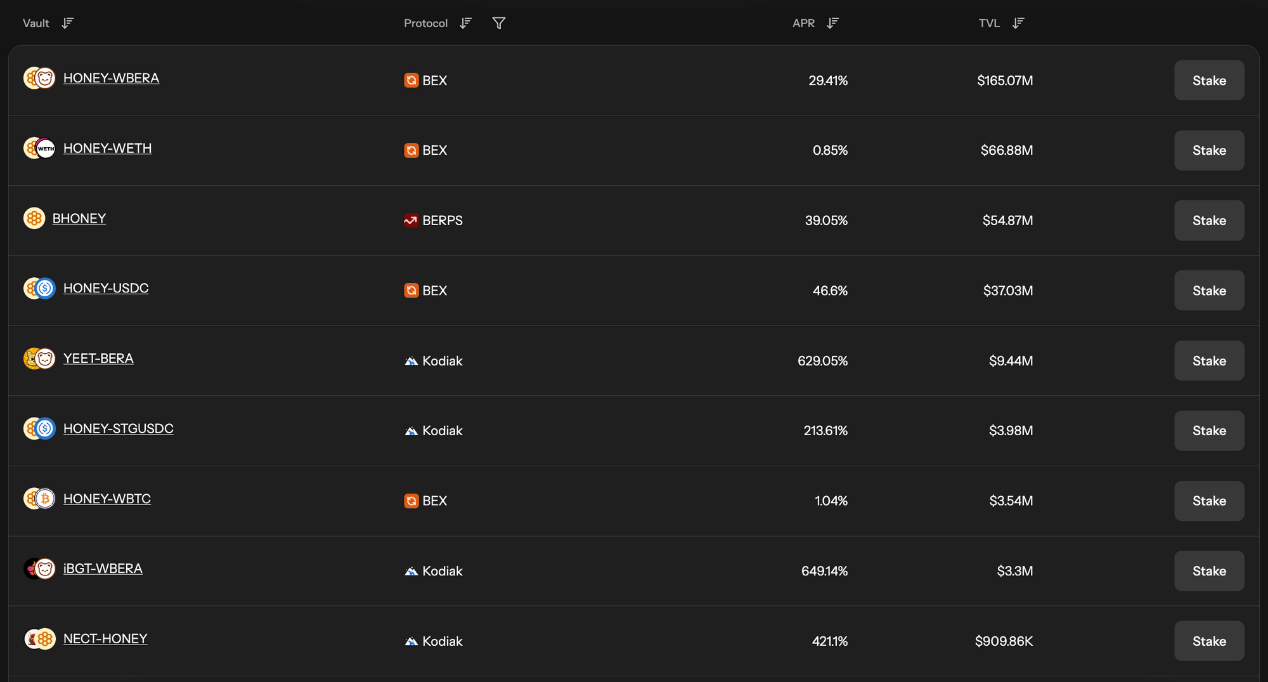
Users can utilize the $iBGT they receive in the following ways:
Stake in Infrared to receive rewards generated by the node
Use in other DeFi protocols
Sell for profit
Therefore, by turning $BGT into a liquid token, Infrared concentrates the rewards generated by the PoL mechanism and distributes them to fewer $iBGT stakers, while also helping other protocols in the Berachain ecosystem to incorporate $iBGT into their protocols, allowing them to provide higher returns to their users on the platform. In addition, Infrared plans to launch new features that allow them to receive and liquidate $BERA required for node operation while running nodes and distributing profits.
The best example of effectively utilizing Infrared’s capabilities is Kodiak’s Island Pool, which we also briefly introduced in the DEX field mentioned above. After the mainnet launch, Infrared plans to launch Kodiak’s Island Pool (already operating in testnet), allowing users to use Kodiak’s CLAMM for more efficient $iBGT farming, and re-stake the received $iBGT in Infrared, or re-deposit it in Kodiak’s $iBGT/$BERA Island Pool for more $iBGT farming. Of course, users can also choose to play in other ecosystems.
Based on the interconnectivity of the protocol and effective ecological gameplay, Infrared has attracted the attention of many users and currently accepts the most $BGT delegations in bArtio Testnet. In addition, many ecological projects have also cooperated with Infrared and plan to launch various derivative products, indicating that Infrared will become the most important infrastructure after the launch of the mainnet.
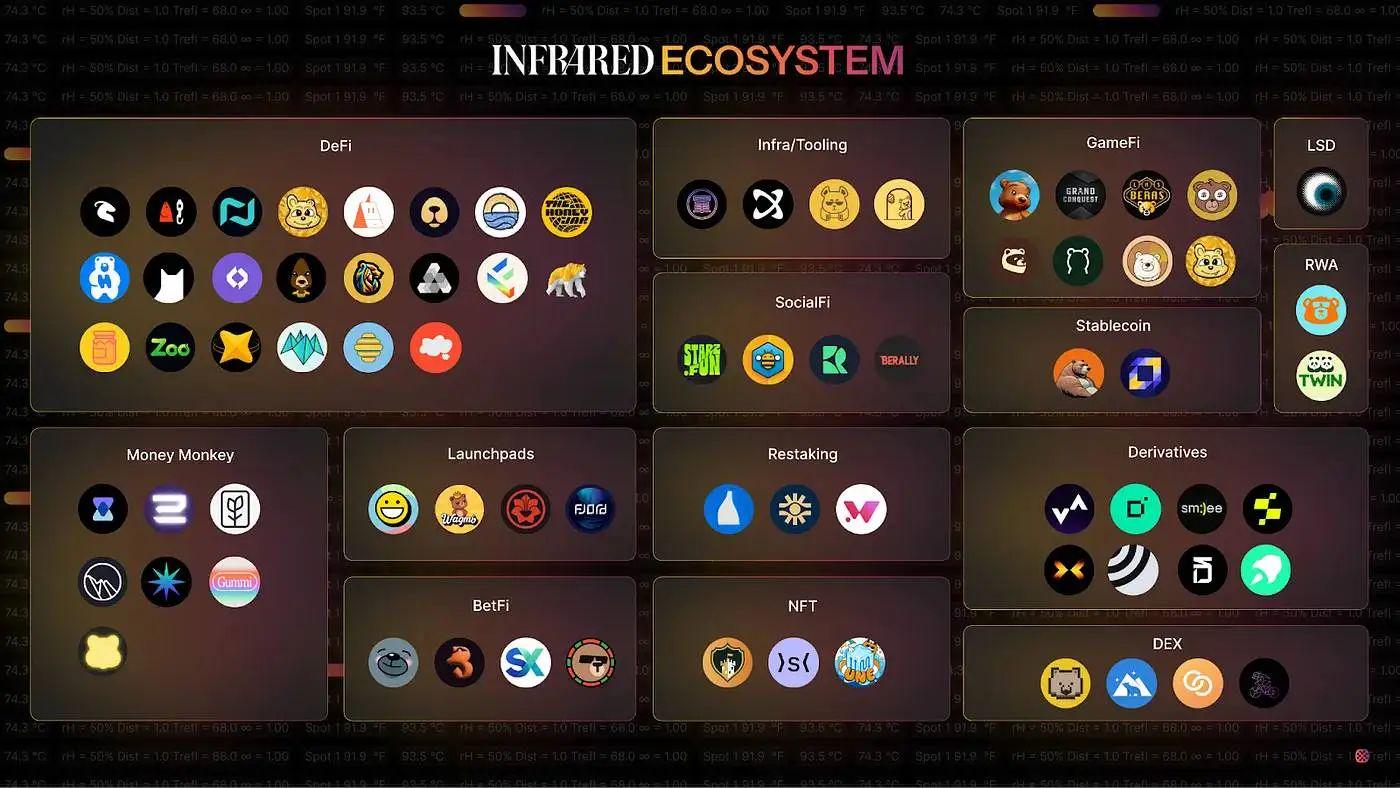
At the same time, clear details on how Infrared will use delegated $BGT to select $BGT’s Emission have not yet been made public. Therefore, it will be important to closely monitor whether Infrared implements these processes in a decentralized manner and to whom they will provide voting rights for their $BGT holdings.
3.2. BeraPaw
BeraPaw is also a liquidity staking protocol, but they do not run their own nodes. Instead, they run vaults between different nodes and liquidity pools registered with BeraPaw, and issue $LBGT as $BGT liquidation tokens.
BeraPaw's governance token is $PAW, and users can use the $BGT held by BeraPaw to vote on which liquidity pools should receive $BGT. Node operators use this method to distribute the reward income generated by staking $BGT to $LBGT holders.
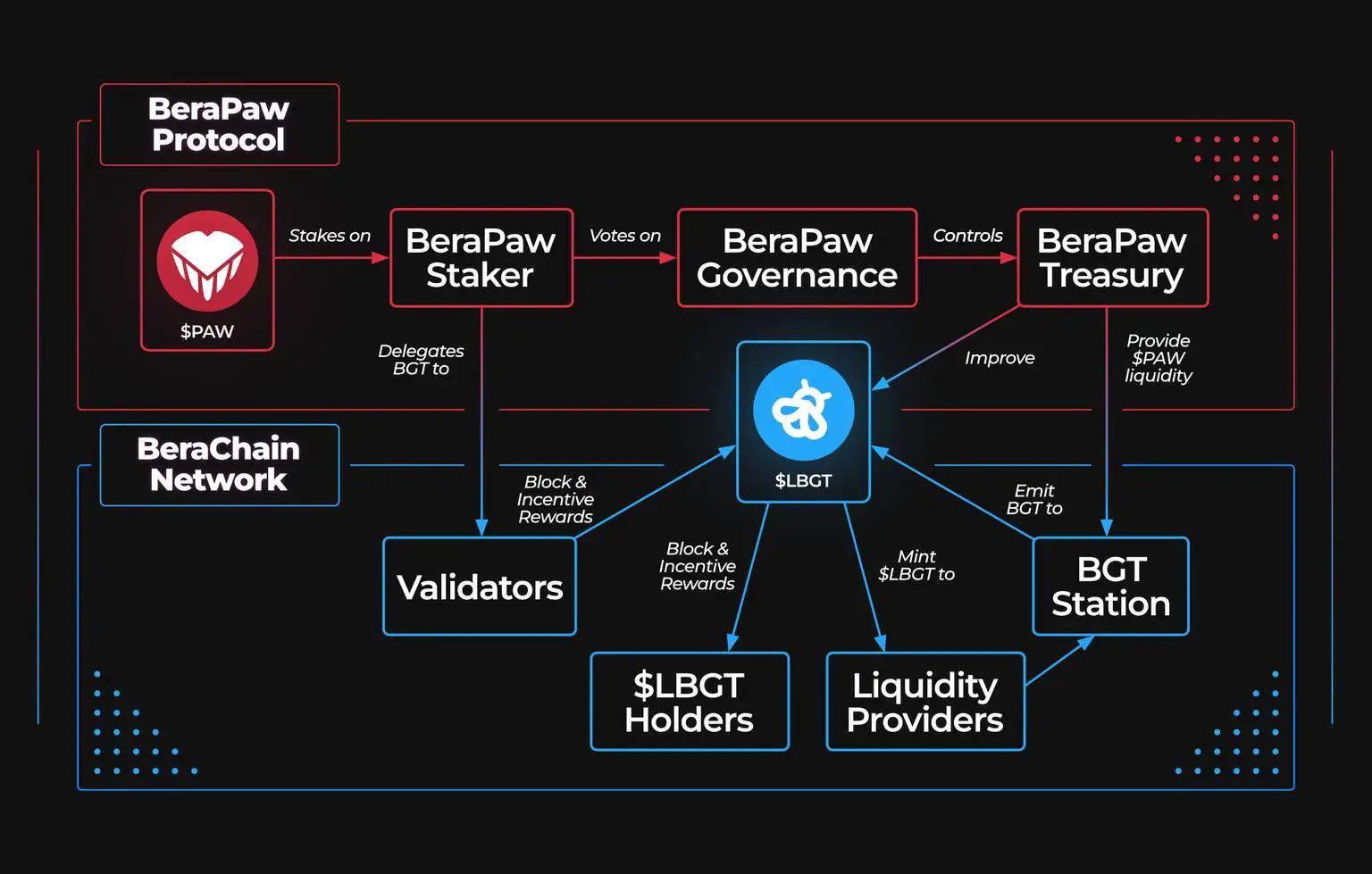
The structure adopted by BeraPaw divides the use of $BGT tokens into two tokens, $LBGT and $PAW, 1) receiving rewards and 2) voting for the $BGT emission pool. With this structure, users and protocols that use $PAW tokens to vote for $BGT Emission can exercise more voting rights with relatively less capital. Therefore, protocols seeking initial liquidity in the Berachain ecosystem are expected to actively use $PAW to generate $BGT rewards for their liquidity pools.
The above are two liquidity pledge protocols that are ready to be officially launched on Berachain. Although these protocols not only allow more derivative products but also allow users to have more ways to play, they also make the ecosystem more complicated. In the Berachain network, the power and status of the node will be proportional to the number of $BGT entrusted, and the liquidity pledge protocol that provides $BGT liquidation function is expected to be adopted by many users and protocols and become the core infrastructure.
Borrowing and Loaning
Berachain also has a native lending protocol, BEND, which provides the following features:
Use $WBTC, $WETH as collateral to borrow $HONEY
Deposit $HONEY
Unlike typical lending protocols, BEND has two notable features: 1) $HONEY cannot be used as collateral, and 2) $WBTC and $WETH deposits do not generate interest, but $BGT rewards are generated when borrowing $HONEY.
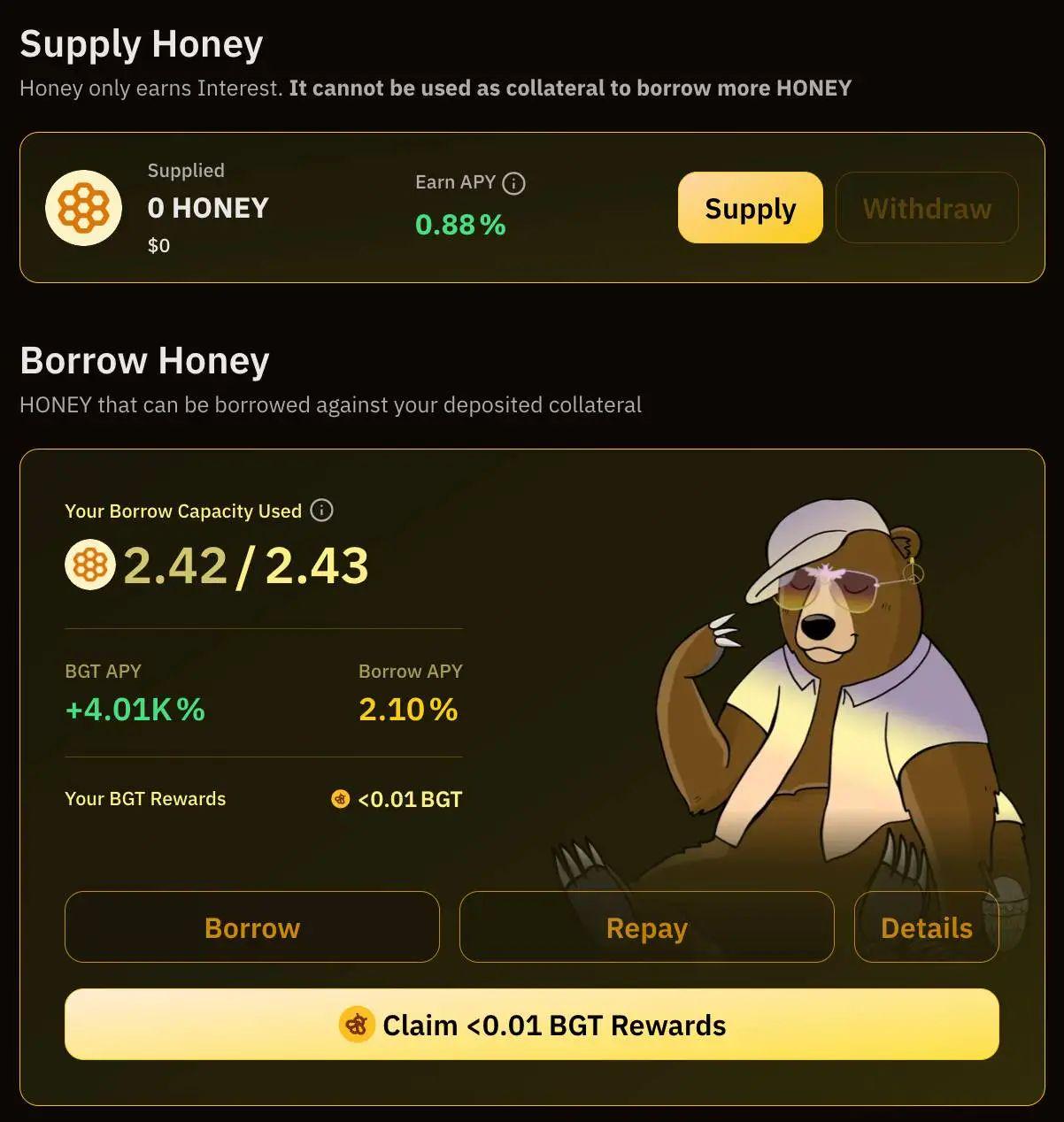
Through this structure, BEND strengthens Berachain's triple token economic structure, generates basic interest for $HONEY, and increases lending demand through $BGT, enriching the liquidity of the ecosystem. Users can also perform $BGT leverage farming by repeatedly exchanging borrowed $HONEY for $WETH, $WBTC and depositing them into BEND.
Next, we will explore in detail several major lending protocols that are about to be launched on Berachain and the functions provided by each platform.
4.1. BeraBorrow
BeraBorrow is an over-collateralized stablecoin issuance protocol where users can mint $NECT stablecoins. It allows not only common assets such as $BERA and $HONEY, but also BEX and Berps LP tokens and Infrared's $iBGT as collateral assets. $NECT minted with collateral assets can be deposited into BeraBorrow's liquidity stabilization pool, and depositors can collect borrowing fees and liquidation fees from $NECT borrowers, establishing a structure that supports the basic needs of $NECT.
In addition to $NECT, BeraBorrow also has a governance token $POLLEN, which can be used as an incentive token in the following aspects:
Liquidity pool for rewarding $BGT Emission
Liquidity pool that encourages collateral deposits up to $NECT debt
As rewards distributed to depositors in the liquidity stable pool
In addition to this basic structure, LP tokens deposited in BeraBorrow are automatically deposited in Infrared to generate $iBGT rewards and automatically redeposited in Infrared to generate compound interest. Users can borrow $NECT to provide liquidity in other protocols and redeposit the received LP tokens in BeraBorrow to establish leveraged positions.
In addition, BeraBorrow also plans to distribute $BGT to the DEX liquidity pool for $NECT and $iBGT transactions, strengthening the demand and market liquidity of $NECT while providing high deposit returns to liquidity providers.
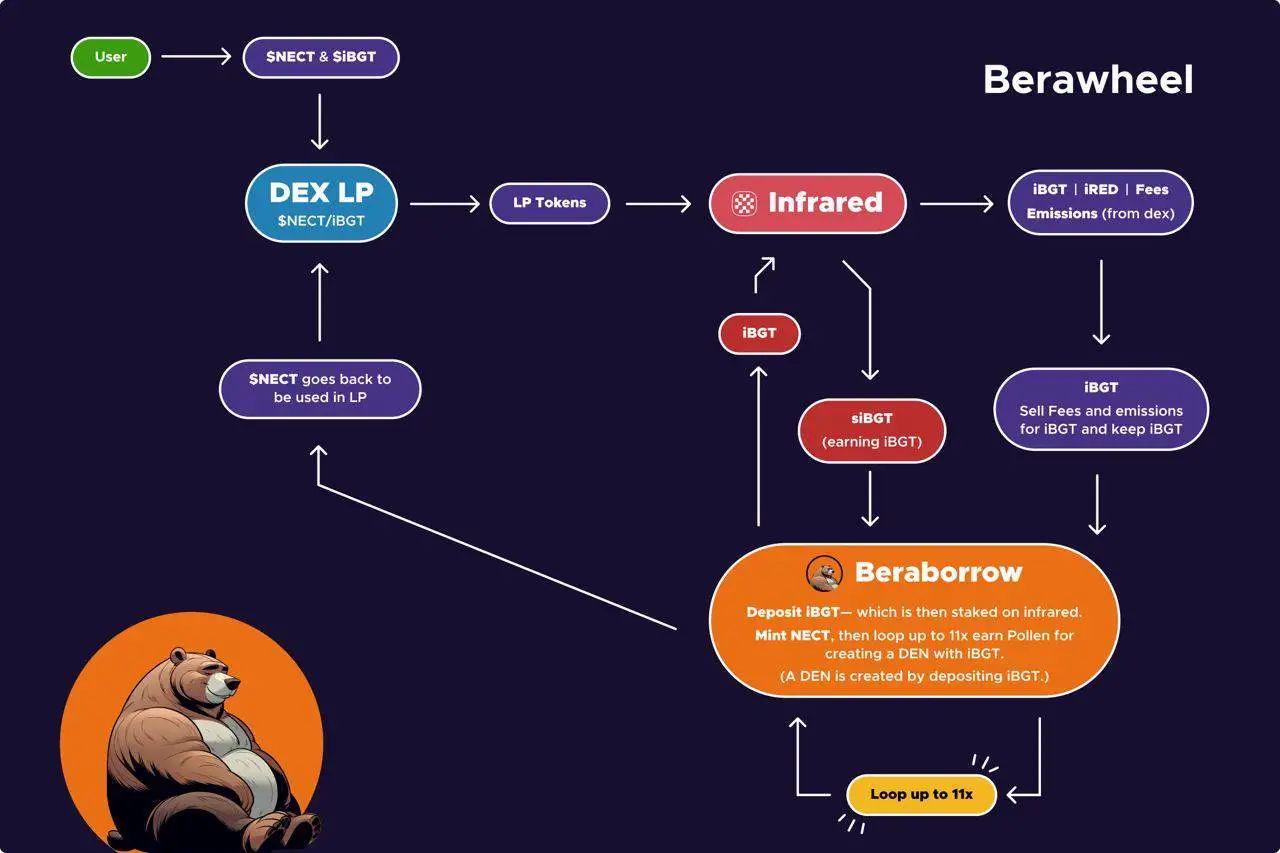
With the support of various demands, $NECT is expected to become the core native stablecoin together with $HONEY in the Berachain ecosystem.
4.2. Gummi
Gummi is a lending protocol incubated by "Build a Bera" that operates without an oracle, allowing anyone to build a lending pool without restrictions. Using this architecture, Gummi plans to use any asset on Berachain to provide users with 100x leveraged positions.
Before the mainnet launch, Gummi has reached partnerships with core infrastructure such as Infrared and Kodiak, and plans to support leverage farming positions for various LP tokens of $iBGT and Kodiak.
It can be seen that, unlike other lending protocols in other networks that are mainly used for leverage and hedging positions of specific assets, Berachain's lending protocol can amplify the $BGT Emission of the PoL mechanism. Therefore, as more protocols are launched on Berachain and the ecosystem diversifies, the utility and demand of lending protocols are estimated to increase together, making it an important part of the ecosystem.
Derivative Agreements
Currently, various derivative protocols that utilize the PoL mechanism in different ways are also being prepared for launch when Berachain goes live. The basic infrastructure includes Berps, the native Perp DEX that the Berachain team will launch along with BEX and BEND.
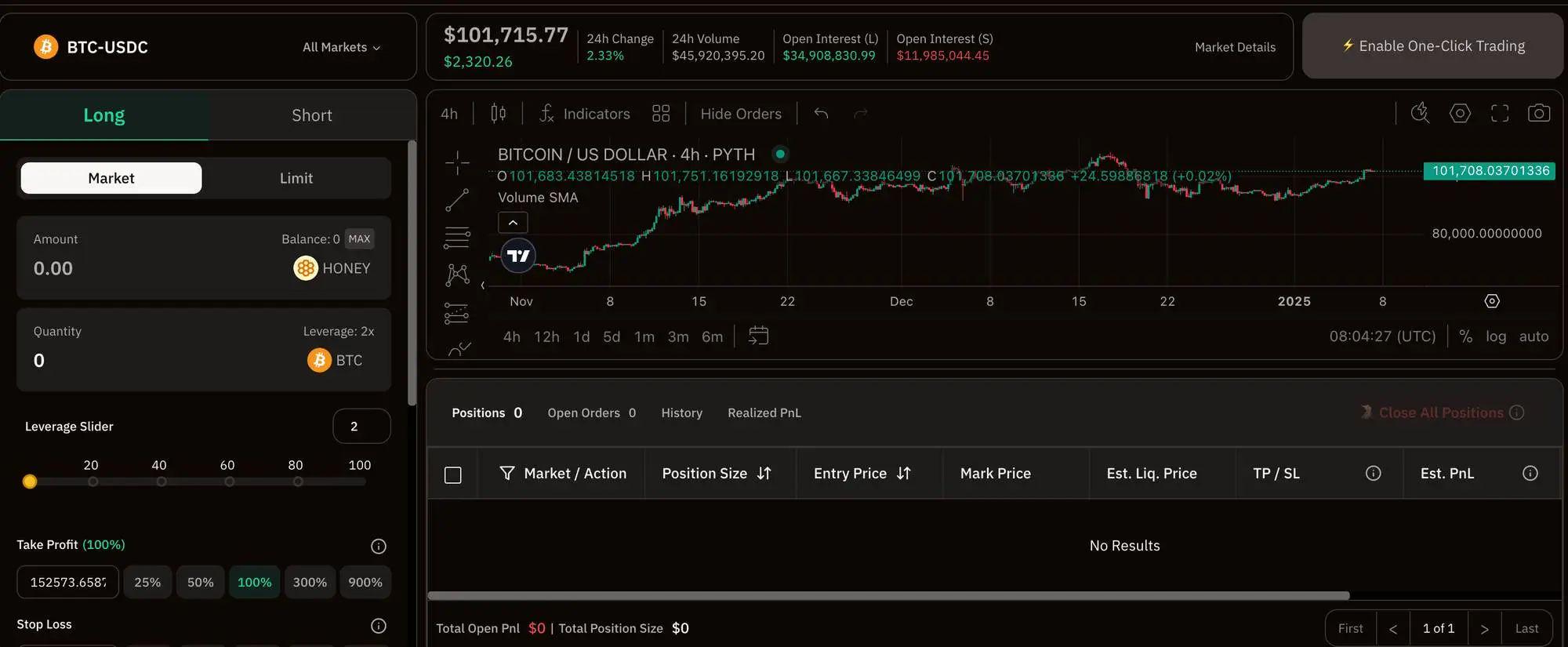
In Berps, users can use $HONEY to establish 100x leveraged positions in various assets, or deposit $HONEY to provide the liquidity required for traders' positions and receive transaction fees, funding fees and $BGT in return.
Through this structure, Berps gives $HONEY a clear use case as the base asset of Berachain's native Perp DEX, while also providing a simple but effective entry point for $BGT Farming, allowing new users who find the PoL mechanism daunting to mine $BGT rewards through a single token $HONEY deposit. As a result, the protocol is expected to become the most critical protocol supporting Berachain's triple token economy.
Next we take a look at some of the unique derivative protocols that are set to launch on Berachain.
SMILEE
SMILEE is an options protocol that creates hedging positions for DEX liquidity providers. Options created in SMILEE have a unique structure that can generate more profits when prices fluctuate more, creating the exact opposite effect of uncompensated losses (IL, where liquidity providers incur greater losses when volatility is greater).
Users must pay a certain amount of option premium to establish option positions in SMILEE. There are three types of option positions to choose from:
Bull: A bet on a large upward price movement until expiration.
Bear: A bet on a significant downward price movement until expiration.
Smile: A bet that the price moves significantly upward or downward until expiration.
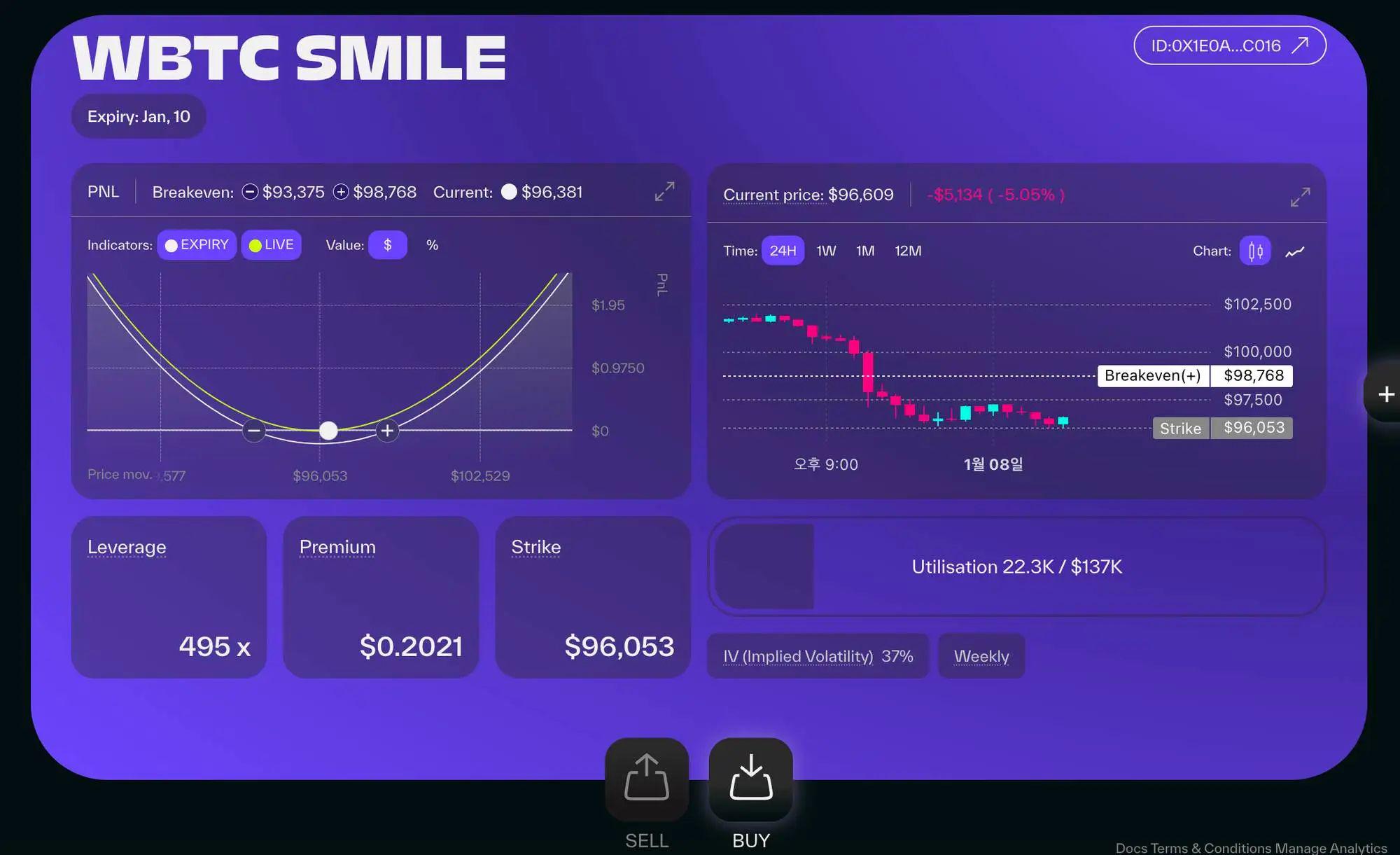
In addition to such option transactions, users can also provide liquidity for option positions established by option traders and collect option fees paid by traders. Although liquidity providers face uncompensated losses (IL) equal to the profits of traders, similar to providing liquidity to DEX, SMILEE reduces the uncompensated losses of liquidity providers by rebalancing liquidity provision positions in real time when option transactions occur.
The Berachain network protocol is expected to create liquidity pools on major DEXs (including the native dapp BEX) to increase the liquidity of its tokens and generate $BGT rewards for these pools. In this environment, we can estimate that liquidity providers and protocols that mine $BGT will widely use SMILEE as a hedging tool for LP positions. In addition, if SMILEE's option positions begin to receive $BGT Emission in the future, SMILEE's position in the Berachain ecosystem will become more solid.
5.2. Exponents
Exponents is another derivative protocol that uses its own reverse asset issuance protocol IBC (Inverse Bonding Curve) to achieve leveraged space that will not be liquidated on all assets within the ecosystem.
IBC uses an inverse Bonding Curve, which is the opposite of the general Bonding Curve concept. Bonding Curve is a price discovery mechanism recently adopted by many memecoin launchpads (such as Pump.fun). The traditional Bonding Curve achieves price increases by reducing the number of required assets and as more collateral assets are deposited into the liquidity pool; while IBC achieves the opposite asset, as demand increases, the price will also decrease, and because more collateral assets are deposited, the number of receivable assets will also increase.
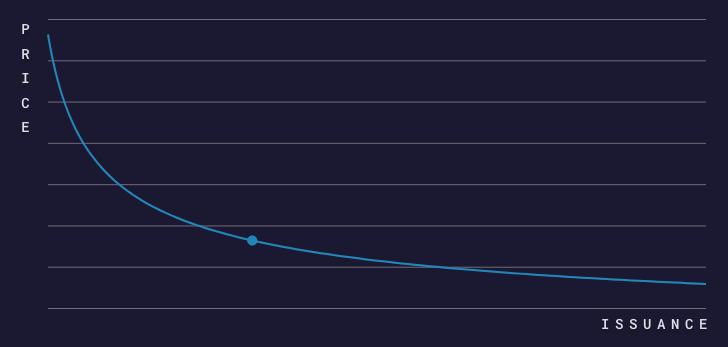
Exponents uses the IBC mechanism to implement long and short positions of all assets without the need for an oracle. Its purpose is to provide leveraged positions without liquidation by adjusting the IBC mechanism parameters to make the slope of the Bonding Curve steeper.
In addition, IBC also has the function of staking synthetic assets issued in the protocol and distributing the profits generated by the protocol. When combined with Berachain's PoL mechanism, $BGT Emission can be distributed as a reward to users who issue assets through IBC. In other words, by using $BGT as a reward, users are encouraged to establish short positions on competing protocol tokens, thereby achieving more diverse ecological gameplay.
In addition to SMILEE and Exponents discussed above, various derivatives protocols are also being prepared for launch on Berachain, including IVX, which establishes short-term, highly leveraged positions at low cost through the 0-DTE function, and Polarity Finance, which provides loans with options as collateral. Compared with derivatives in other network ecosystems, each derivative is more diverse and complex in form, with some protocols complementing Berachain's PoL mechanism and others using the mechanism to highlight its unique advantages.
other
So far, we have explored several protocols that serve as basic infrastructure in the blockchain ecosystem (including DEX, liquidity staking, lending, and derivative protocols, etc.), and discussed how these projects highlight their unique advantages and use the PoL mechanism in Berachain.
However, in addition to the DeFi track introduced so far, various types of projects are also preparing to be launched on Berachain. Some of these projects adopt Berachain's unique structure and actively use the PoL mechanism, while others only achieve a high degree of synergy with the ecosystem and do not directly use the mechanism; and some projects are advertised with concepts that are consistent with the Berachain cultural code, all of which attract users' interest and attention with their own characteristics.
Next, we will introduce these more distinctive projects that will be launched on Berachain.
6.1. Goldilocks
Goldilocks is a DAO and platform that develops Berachain’s exclusive DeFi infrastructure, which consists of the following sub-protocols:
Goldiswap: Contains the FSL pool (Floor Supporting Liquidity Pool) that guarantees the minimum floor price of the Goldilocks governance token $LOCKS, and the PSL pool (Price Supporting Liquidity Pool) used to exchange $HONEY and $LOCKS. This structure uses the fees generated by $LOCKS transactions in the PSL pool to continuously increase the floor price of $LOCKS. Users who pledge $LOCKS can receive $PORRIDGE as a reward, and $PORRIDGE gives users the right to purchase $LOCKS at the lowest price, and users can use $LOCKS as collateral to borrow $HONEY.
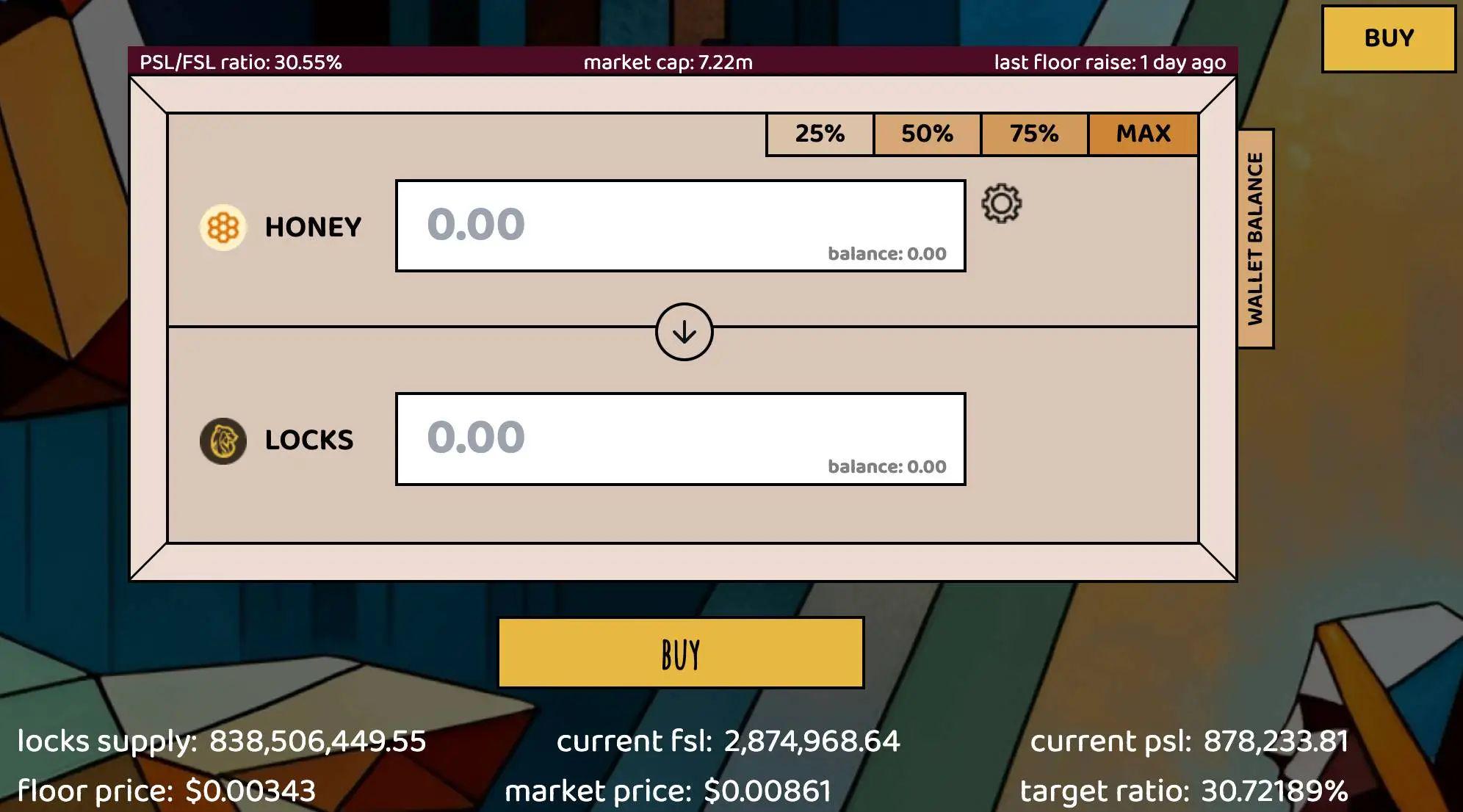
Goldilend: NFT collateral lending protocol for Berachain ecosystem NFTs.
Goldivaults: Generate interest using time-locked assets stored in the Berachain ecosystem DeFi protocol. Depositors receive OT (ownership tokens), which grant the right to claim the principal at maturity, and YT (yield tokens), which grant the right to claim the interest generated. This allows users to trade against future interest income, providing functionality similar to Ethereum's Pendle Finance. (For more information on this feature, please refer to the article "Pendle Finance - Discovering Untapped Trading Markets").
Therefore, Goldilocks provides Berachain optimized services in the Berachain ecosystem, such as NFT collateral lending and interest trading functions, and the NFT issued by the protocol and liquidity provision play a more important role than other networks. In addition, Goldilocks is expected to gradually secure more users and liquidity by gradually increasing the price structure of the platform token and the lending services that utilize this token.
At the same time, Pendle Finance has also become the core DeFi protocol adopted by many projects in the current Ethereum ecosystem, distributing protocol points through YT for liquidity deposits, thereby promoting its airdrop activities. Similarly, it will be interesting to see whether Goldilocks can achieve dominance in Berachain by cooperating with other projects in the Berachain ecosystem that are preparing for token issuance to create various types of Goldivaults.
6.2. Beradrome
Beradrome is a protocol that pools user liquidity tokens and distributes the profits generated and rewards negotiated with other protocols to users. Beradrome uses the following three native tokens to allow users to internalize the profits generated in Beradrome back into the protocol:
$oBERO: A token that rewards users who deposit liquidity tokens in Beradrome. By burning $oBERO, users can obtain voting rights for the $oBERA reward emission rate in the liquidity pool, or deposit $HONEY in Beradrome equivalent to the amount of $oBERO burned to mint and obtain $BERO.
$BERO: Beradrome's main token. Since the deposited $HONEY is burned together with $oBERO during the minting process, its value is guaranteed to remain above 1 $HONEY.
$hiBERO: Beradrome’s governance token, which can be obtained by staking $BERO. $BGT held by Beradrome can be used to vote on which liquidity pools should receive $oBERO, and can receive profits generated by the protocol. It is also possible to borrow $HONEY using the pledged $hiBERO as collateral.
Therefore, Beradrome encourages the internalization of rewards generated within the protocol by using $oBERO's $BERO minting mechanism, keeping the price of $BERO and $hiBERO above $1, while providing $hiBERO holders with liquidation-free borrowing opportunities for $HONEY deposited during the $BERO minting process. This will continue to attract external liquidity into the protocol, encourage more protocols to develop liquidity through Beradrome, and establish a self-sustaining flywheel that redistributes the rewards it provides to users.
In addition, Beradrome plans to operate its own nodes, obtain $BGT Emission voting rights by accepting external $BGT delegations, separate from its protocol operation mechanism, and allocate $BGT to the $hiBERO casting pool. If this plan is successful in the future, $hiBERO holders will be able to obtain both Beradrome's profits and $BGT, which may attract more liquidity for the Beradrome ecosystem.

6.3. Yeet
Yeet is an on-chain betting game protocol using $BERA. Anyone can participate in the game by betting $BERA (about 0.5% higher than the previous depositor's $BERA) in Yeet's liquidity pool during the set game time. The user who deposited $BERA last takes 80% of the total deposited $BERA in the liquidity pool.
Even if users do not win the game, they can receive Yeet’s native token $YEET as a reward proportional to their betting amount. Users can stake the received $YEET into Yeet’s Liquidity Trifecta Vault to earn betting interest.
The Liquidity Trifecta Vault will receive 9% of the $BERA and $YEET staked by users in the game. The vault will use the deposited assets to provide liquidity to Kodiak, and will redeposit the liquidity tokens received from Kodiak into Beradrome to maximize the interest paid to a given staker.
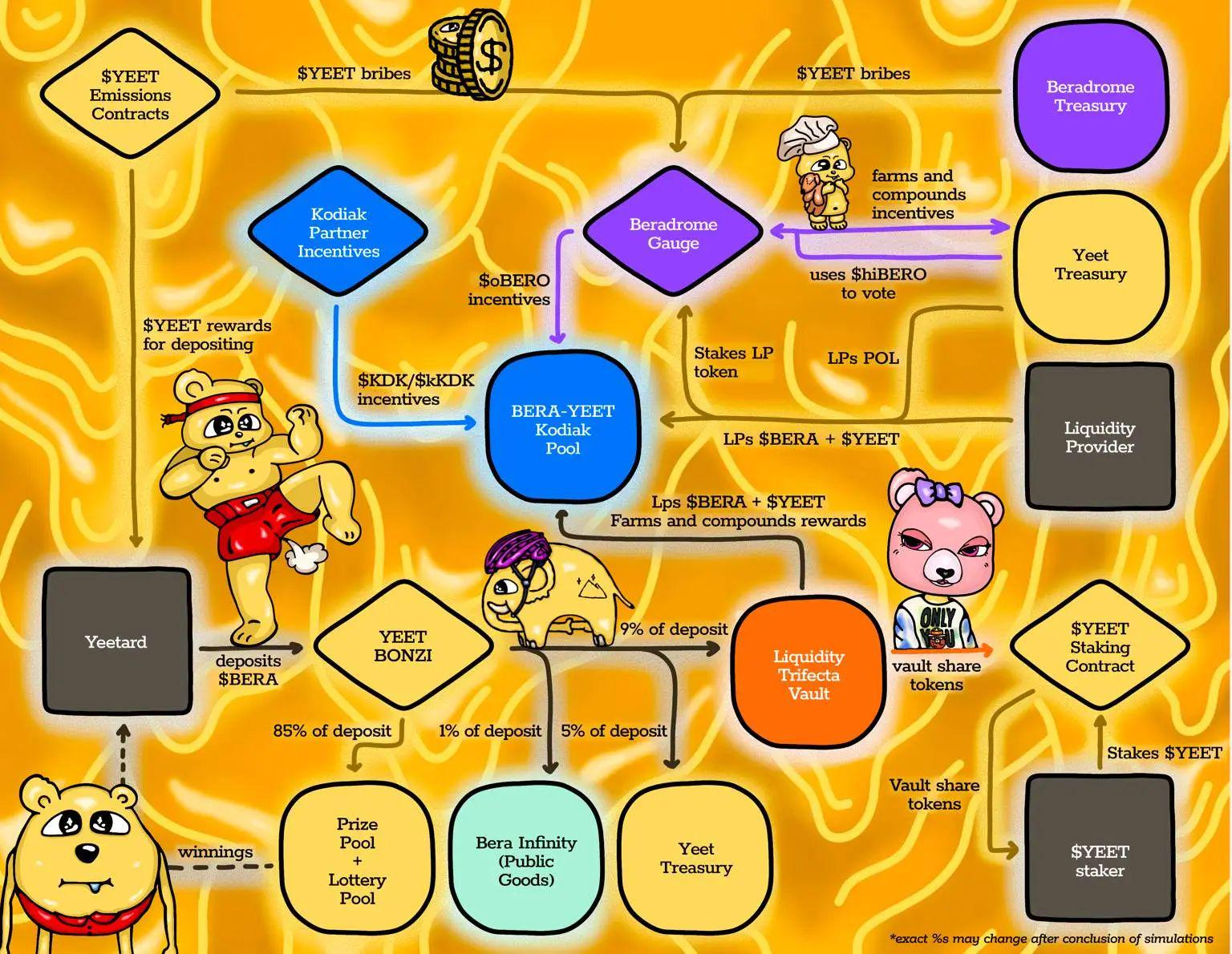
In addition, Yeet plans to launch the YeetBond feature, which allows users to claim bonds for specific tokens at a discount to the market price at maturity. In Berachain, there are various ways to use liquidity to create future value, and this feature provided by YeetBond is expected to be actively used by various protocols as a means of ensuring liquidity.
Therefore, Yeet plans to provide Berachain with optimized "fun features" and "effective features" at the same time. Starting from the test network stage, it will build a solid community centered on its unique joyful and humorous memes, including Yeetard NFT with $YEET reward enhancement function.
6.4. Ramen
Ramen is a Launchpad protocol, similar to Honeypot Finance’s Dreampad, that helps new protocols ready to launch on Berachain to promote and securely raise funds through fair token sales. The platform supports two Launchpad modes:
Fixed Price Model: A method of purchasing tokens at a fixed price. Users must register on the whitelist to participate in the issuance platform, or stake the platform’s native token $RAMEN to obtain Gacha tickets and consume these tickets to win in the draw.
Price Discovery Mode: Unlike the Fixed Price Mode, anyone can participate. Users who wish to purchase an amount of deposited assets equal to their desired token price* place blind bids to determine the settlement price. The right to purchase tokens at the settlement price is granted starting with the user with the highest bid.
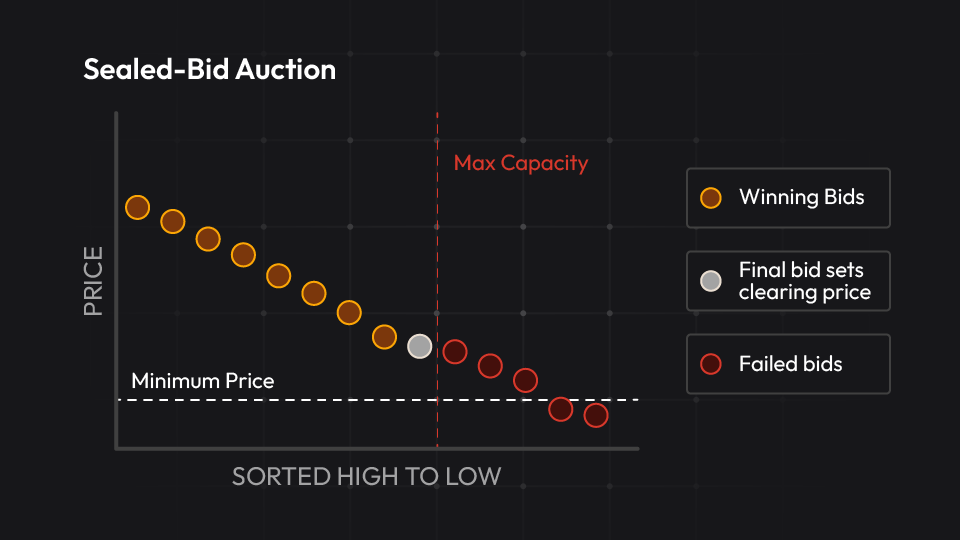
In addition to the Launchpad feature, Ramen also plans to launch the Airdrop Recipes feature, which makes it easy to set and execute token airdrop criteria. Ramen provides all the necessary functions from token issuance to sales and distribution, and aims to become the core infrastructure adopted by many new projects after the launch of the Berachain mainnet.
However, in order for Ramen to maintain user interest, it must have a certain degree of protocol dependency, and there needs to be a way for projects that sell tokens through Ramen to operate successfully and provide profits to token buyers. Therefore, it is necessary to continue to observe the long-term growth of projects that sell tokens through Ramen, and whether potential projects choose to use the Ramen issuance platform.
6.5. PuffPaw
PuffPaw is a Vape 2 Earn project that allows users to earn tokens through e-cigarettes. It measures users' smoking activity through self-produced smoking devices and e-liquid boxes, and rewards higher $VAPE tokens for e-liquids with lower nicotine content to encourage smoking cessation.
Additionally, through its Leasing-Borrowing program, users who do not want to smoke but want to participate in the program can also lend their devices to users who are unable to purchase the devices and share in the profits, creating a structure that can attract Berachain ecosystem users regardless of whether they smoke or not.
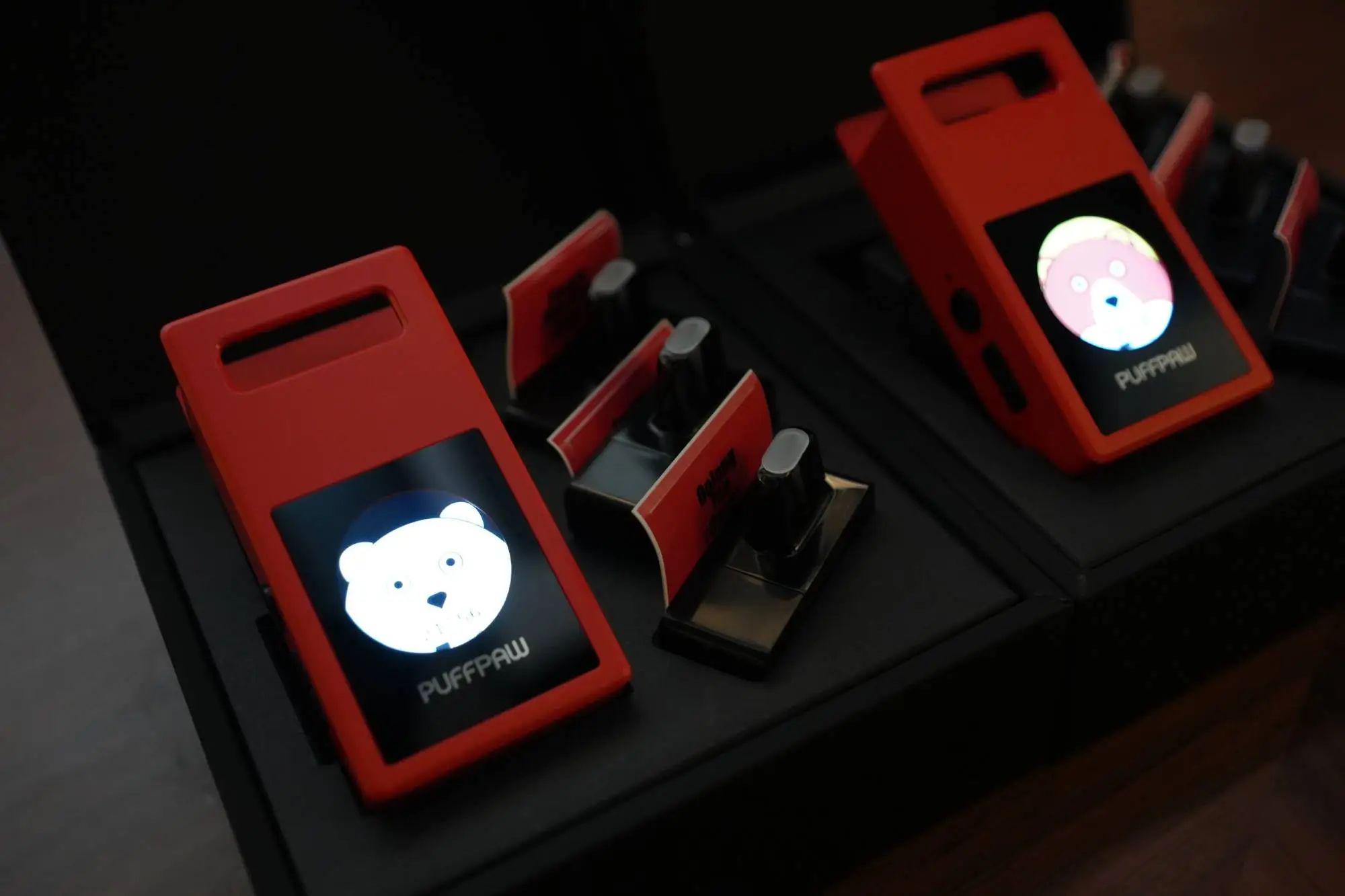
In December 2023, PuffPaw successfully sold out its PUFF PASS NFT as a ticket to participate in the project, and plans to strengthen its Vape brand image and expand its ecosystem through additional device sales. In addition, the company also plans to generate additional revenue by providing AI companies and insurance companies with data on user device usage, which will support the value of $VAPE provided as a reward, and also plans to establish a method to generate additional income for $VAPE holders using the PoL mechanism.
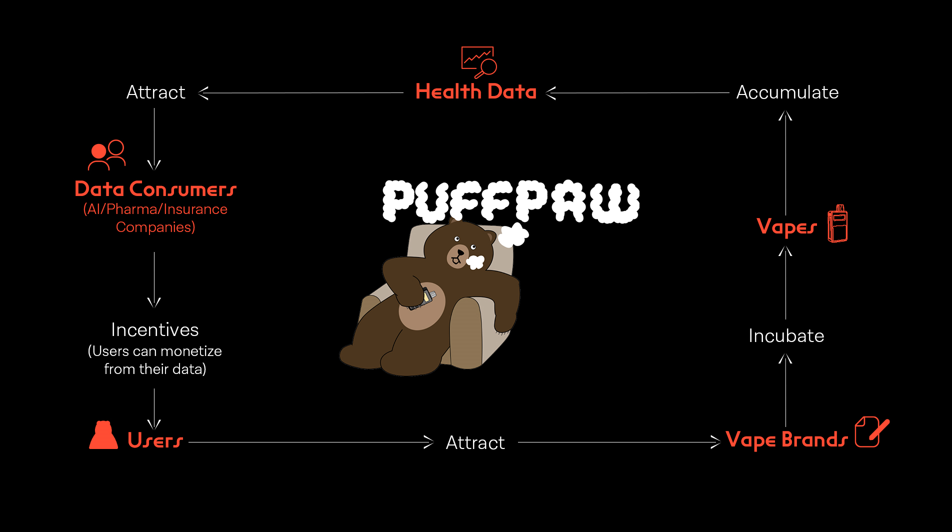
At this point, we have studied the protocols that represent various tracks on Berachain, and each protocol has its own unique advantages. In addition, there are other projects that can be participated in without understanding Berachain's liquidity mechanism:
Beratone: Life simulation, role-playing game
Junky Ursas: GambleFi Platform
Fable: Decentralized Media/Gaming Platform
Onikuma: SocialFi on-chain platform
In addition, various Vault/On-chain fund protocols such as Dirac Finance, NAV, and D2 will also be launched one after another. By combining the functions of the Berachain protocol, various DeFi strategies in the ecosystem will be simplified, allowing new users to easily participate in the application and obtain profits through simple risk management.
These protocols can not only encourage more users to join the Berachain ecosystem to increase the liquidity of the overall ecosystem, but also promote the use of the ecosystem.
Community
The structure adopted by most of the protocols in the Berachain ecosystem is to obtain initial liquidity by allocating high returns to liquidity providers, actively utilizing the PoL mechanism and using NFTs and Memes to build communities as a means to further strengthen and expand these structures.
Since the PoL mechanism allows users who hold more $BGT and liquidity in the ecosystem to have higher negotiation power and more opportunities to obtain incentives, some projects have the strategy of first forming communities with NFTs and Memes, establishing reputation and status through various community activities, and then generating and distributing profits. However, these projects do not necessarily provide specific functions in the protocol.
7.1. The Honey JAR
The Honey Jar is a community united by a core concept, using a community-driven flywheel to build sticky liquidity, and developed in 2023 around an NFT called Honeycomb.
The Honey Jar community has expanded in a similar way to how Berachain grew, by issuing and distributing Honeycomb’s derivative NFT series to holders. On the basis of community expansion, it has consolidated its position by collaborating with various projects developed within the Berachain ecosystem and providing various benefits of these projects to NFT holders.
Subsequently, The Honey Jar produced various Berachain-related educational materials and provided various useful services such as the testnet Faucet for new users entering the Berachain ecosystem. In addition, The Honey Jar is also a venture capital studio in the Berachain ecosystem, incubating the community-based evaluation service S&P (Standard&Paws) for evaluating Berachain ecosystem projects, as well as Bera Infinity, a platform for measuring and rewarding contributions to the Berachain ecosystem.
According to Honey Jar's Ecosystem Explorer, as of January 11, Honey Jar has directly participated in or has a partnership with 89 projects, establishing Honey Jar's position as the most influential core community in the current Berachain ecosystem. In addition, users holding Honeycomb NFTs will also receive NFT whitelists and token airdrop opportunities from many cooperative projects, making Honeycomb the NFT series with the highest reserve price of 0.6 ETH in the Berachain NFT ecosystem other than Bong Bears and Rebase NFTs.
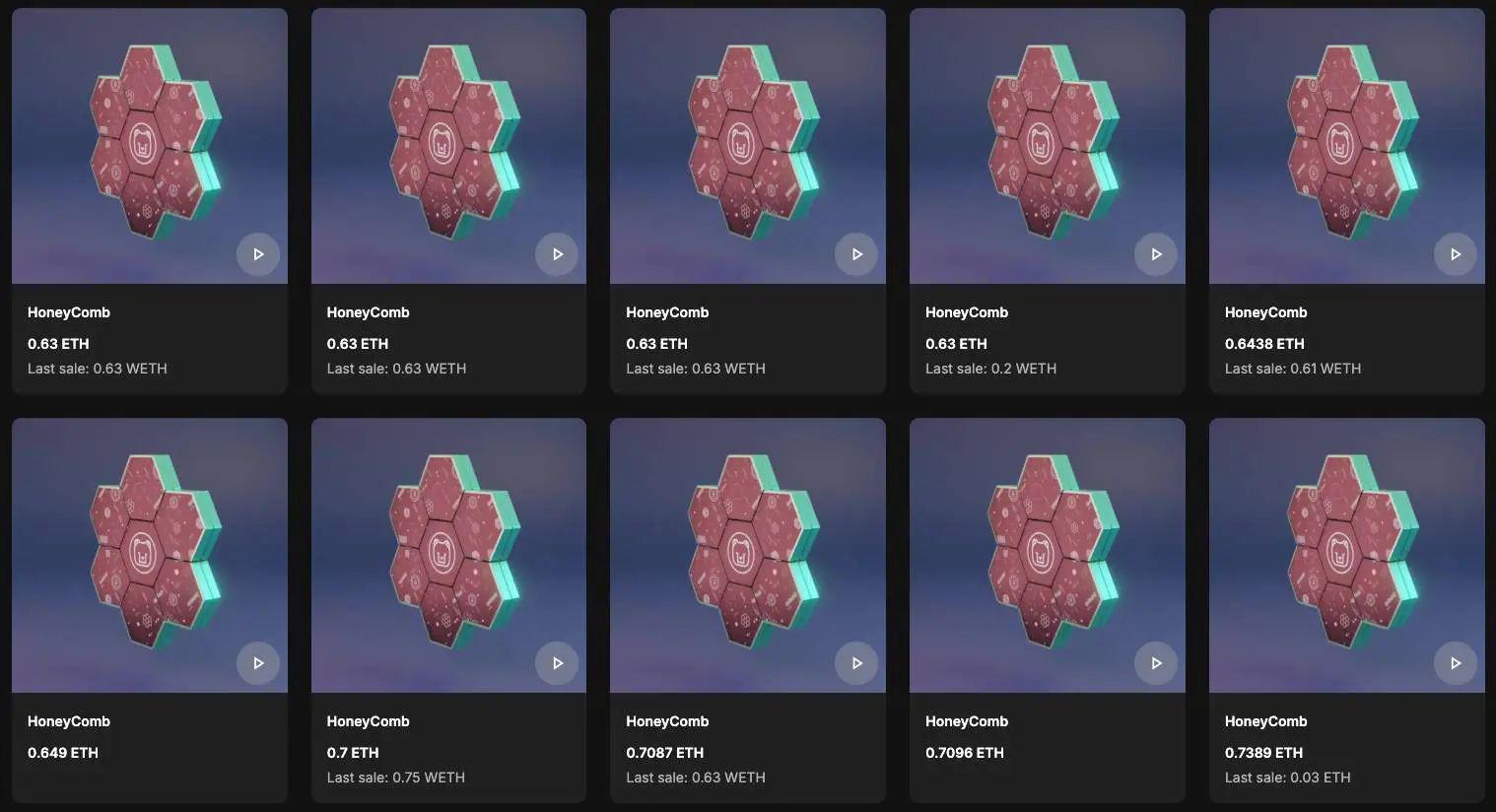
In the current bArtio Testnet, the $BGT representation obtained by the nodes operated by Honey Jar ranks third, second only to the nodes operated by Infrared and Kodiak. We can also see that the next rankings are also community-centric projects, including Beraland, which provides Berachain-related information in the podcast, and TTT, which provides teaching materials for Vietnamese users and operates nodes. They are the projects that have obtained the most $BGT representation after Honey Jar.

Through these data, we can understand that in the current Berachain ecosystem, taking the community as the center to gain advantages in the PoL mechanism is an effective strategy.
in conclusion
Above, we have explored how the infrastructure protocols of the Berachain ecosystem (such as DEX, liquidity pledge, and lending protocols) combine various functions to create complex financial services. We also learned from some examples of ecological projects how different protocols use Berachain's PoL mechanism and unique community culture to attract user interest and liquidity with "high returns" and "entertainment".
At the same time, Berachain also recently announced that it will support the issuance of $BERA tokens and initial ecosystem liquidity through the Boyco, RFA (Request for Application) and RFC (Request for Community) programs, suggesting that the mainnet will be launched soon.
Boyco: A pre-mainnet liquidity platform that allows protocols planned to be deployed on Berachain to negotiate liquidity and future reward distribution plans with liquidity providers in advance in a transparent environment.
RFA (Request for Application), RFC (Request for Community): After the Berachain mainnet is launched, a plan to allocate $BERA tokens to projects that actively develop or build communities within the ecosystem. The selected RFA and RFC will continue to contribute to the ecosystem by using the allocated tokens and distributing them to ecosystem users to promote initial ecosystem activities and liquidity activities.
From these plans, it can be inferred that Berachain will show rapid growth after the launch of the mainnet, so users who plan to participate in the early ecosystem can pay close attention to the trends of RFA and RFC projects to formulate their strategies for participating in the ecosystem.
Currently, Pre-Boyco vaults operated by protocols such as Stakestone, Ether.fi and Ethena, as well as the Boyco vault launched on January 28, have received 2% of the initial $BERA token supply. As of January 31, the total accumulated deposits in these vaults have reached $2.35 billion. If this liquidity is directly used by ecological protocols after the mainnet launch, Berachain's TVL will be higher than Sui, which is currently ranked 8th in TVL.
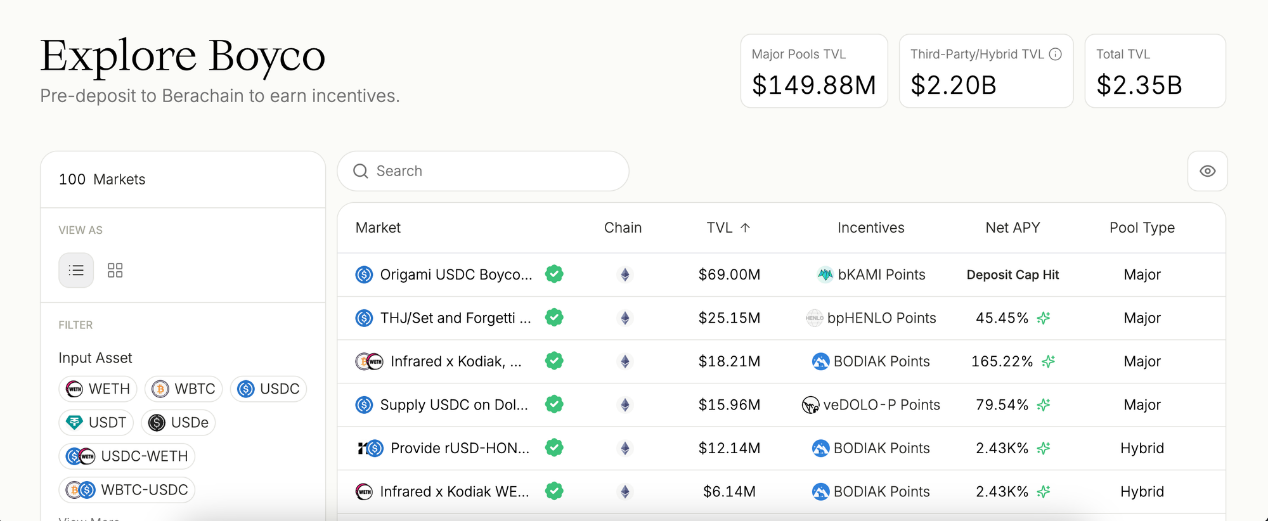
As the end of Boyco on February 3 approaches, users are expected to deposit funds into high-yield vaults in the final days, further increasing the total TVL. In addition, considering that Berachain's PoL structure encourages liquidity inflows and returns the generated profits to the network, we estimate that the network's TVL will also increase significantly from the current figure after the mainnet is launched.
However, we cannot say for sure that this ecosystem-first reward structure, and the attempts to reinforce it through Boyco and RFA/RFC, will perfectly guarantee the long-term sustainability of Berachain. Nevertheless, the successful ecosystem and community example of Berachain before the official launch of the mainnet is quite rare in the blockchain industry, and will definitely become an important reference case for future projects.













